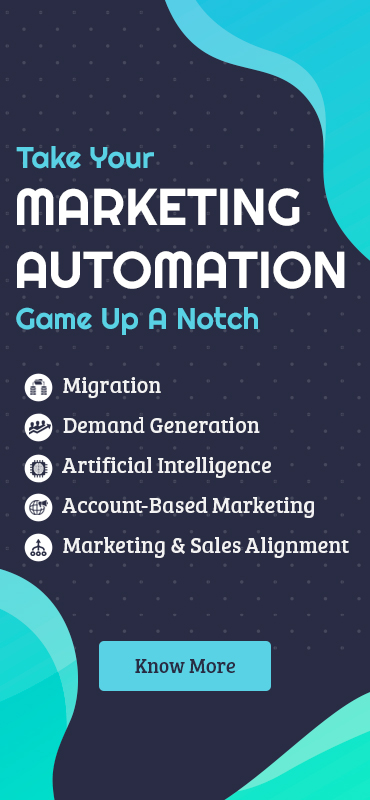Not too long ago, thinking about personalization was equivalent to writing a different email to everyone on your mailing list.
But thanks to technology growing by leaps and bound, we have advanced CRM and marketing automation platforms (MAPs) that let us tweak almost every aspect of our marketing campaigns in just a few clicks. In fact, 77% of consumers opt for and recommend a brand that delivers a personalized experience.
In our previous blog posts, we have discussed what dynamic content is, how you can deliver it, and why it is a must-have.
And in this blog post, we’ll talk about how different MAPs help you make your assets dynamic. Let’s get started.
Dynamic content in marketing automation
Dynamic content fits like a hand in glove with marketing automation as it helps ensure that you deliver tailored messaging to the right audience.
Here are a few ways to start with dynamic content in marketing automation.

- Lead Score: You can set up automation rules to assign scores to your leads on their actions and based on which, you can display content that is relevant to their activity.
- Location-Based: With geo-location, you know the time zones, the zipcodes, and the weather triggers of your audience through which you can offer personalized offers segmented by location. You can even schedule your marketing campaigns to cater to visitors in a specific time zone.
- Lifecycle Stage: You can map your content to the buyer’s journey and nurture them with relevant content with the help of your MAP. For instance, a prospect who is in the awareness stage would receive blog posts while someone who’s in the decision stage would receive content like pricing sheets or free demos.
Dynamic Content + Marketing Automation = Success
MAPs are favored by most marketers as they allow them to deliver personalized customer experiences and spend significantly less time, money, and effort in doing so.
All marketing automation platforms extend the ability to create, send, and measure personalized email campaigns. Where they differ is how email, landing page, and website content is created and personalized. Take a quick look at how.
1. Marketo: Dynamic content in Marketo refers to a content block in an email or a landing page that differs based on who is reading it. To begin, you need to segment your audience into sub-categories like location, language, or industry. Each category of the segmentation done can be further divided into sub-segments that you define across your entire database. In Marketo, velocity scripting enables you to make your assets dynamic. It fetches data from custom fields, customer objects, etc, to generate dynamic content on the basis of user preferences.
2. Pardot: Personalization in Pardot is enabled through variable tags and dynamic content. In Pardot, the variation criterion (i.e. the field) is what your dynamic content will be based on. When you use a field value from your prospect’s record, it displays an image/text dynamically in an email or on your website. There are a few tools you can use to generate dynamic emails in Pardot like HML/Variable Tags, Dynamic Content, and a Dynamic Sender/From Address.
3. Salesforce Marketing Cloud (SFMC): In SFMC, dynamic content is presented according to the rules you create based on the subscriber’s attributes, data extension values, etc. You can create rules based on 4 elements:
- attribute
- value
- operator
- content
In SFMC, dynamic content blocks use field value, through AMPscript which you can embed within HTML emails, text emails, landing pages, SMS messages, etc. The AMPscript renders the content on a subscriber-by-subscriber basis.
4. Eloqua: In Eloqua, you can create dynamic content blocks by setting rules to compare contact and account fields, you can link contacts in custom objects and events, through a custom app to load data from external sources. For instance, if you have an event coming up, you can create dynamic content around the persona you think may be interested in it.
When you have powerful insights about your target audience, you can deliver unique experiences and that is why dynamic content and marketing automation together is a duo that converts.
Standard dynamic content is quite easy to use but dynamic content through velocity scripting in Marketo, AMPscript in SFMC, and custom apps in Eloqua can be a little tricky and would require technical expertise. If you’d need someone to take charge of your dynamic content efforts, team Grazitti will have you covered.
Need a hand to boost dynamic content in your MAP? Talk to us!












